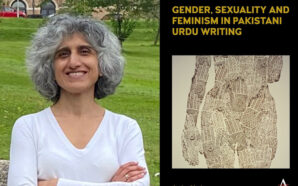Those already familiar with the concept of the “second shift” would know that the word “revisiting” in the title of this essay is actually a misnomer.
And to those less familiar or uninitiated, let me introduce you, officially, to Second Shift.
But in order to appreciate what the second shift entails, we must know what the “first shift” is all about, first. We understand the first shift in terms of work or employment, which is exactly what terms like “shifting schedules” or “shift work” refer to. Simply put, the first shift is remunerated work or paid labor. You perform a task – whether it be as a worker in the informal sector, a blue collar worker or as CEO of a company – you get paid in wages and salaries. If you’re in a good place, you may even get bonuses, incentives and profit sharing options.
The first shift is where capitalism operates in full. The owner provides the capital and the infrastructure, acquires labor to perform the activities necessary to generate income for the capital invested, and pays workers their wages or salaries for accomplishing tasks that lead to the capitalist’s acquiring the objective of every capitalist enterprise, that is, maximum profit.
As for the second shift, it is everything – or nearly everything the first shift is not. It is grossly underpaid (or totally unpaid), undervalued and, to apply Marxist theory, largely exploited.
This is not to say first shift work is never undervalued or exploited; it is. But second shift work is not even viewed by most as legitimate work; hence, its lack of place in the larger scheme of all things professional and paid.
First coined by Arlie Hochschild, the term “second shift” generally referred to “the dual burden of paid and unpaid work experienced by working women.”
So whether a woman worked in the office, a restaurant, a factory, another house, etc. – work for which she is paid – she also had the second shift to go home to, that is, domestic duties in her place of residence. This phenomenon has also been called “double duty,” and is a daily experience among working mothers.
Hochschild’s landmark study

Based on 1986 data, 55 percent of women had already joined the workforce, so it seemed logical to assume that, at least in the case of working mothers, fathers would be taking a more active role in housework and childcare.
In the preface of the 2012 edition of the book “The Second Shift: Working Families and the Revolution at Home” (first published in 1989), Hochschild recalls how she managed to teach as a sociology professor in the University of California, Berkeley while caring for her three-month-old baby, David; that is, a solution she called a pre-industrial one where she had “to reintegrate the family into the workplace.”
Their classic study was done during a period when more women had already joined the workforce and began advancing professionally – a far cry from the 1950s when only about 30 percent of American women were part of the labor force.
Based on 1986 data, 55 percent of women had already joined the workforce, so it seemed logical to assume that, at least in the case of working mothers, fathers would be taking a more active role in housework and childcare. During the study, two-thirds of all mothers were already part of the American labor force.
To set a basis for comparison in terms of how much involvement husbands (fathers) had with domestic responsibilities, Hochschild cited an earlier study by Alexander Szalai et al, done from 1965 to 1966, involving a random sample of 1,243 working parents in forty-four American cities. Their findings were as follows:
- Working women averaged three hours a day on housework while men averaged 17 minutes
- Women spent fifty minutes a day devoted exclusively for their children while men spent twelve minutes
- Working fathers watched television an hour longer than their working wives
- Working fathers slept a half hour longer each night
And by making use of averaging in analyzing data from major researches done in the 1960s and 1970s, Hochschild made the following discoveries:
- Women worked roughly fifteen hours longer per week compared to men
- Women worked an extra month of 24-hour days in a year; over a dozen years, this meant an extra year of 24-hour days
- Most women without children spent much more time on housework than men
- Women with children devoted more time on both housework and childcare
- A wage gap existed (and still does) between men and women in the workplace
- A “leisure gap” existed (and still does) between men and women at home
The objectives of Hochschild, with research associates Machung and Kaplan, was to establish whether or not the projected image of the modern-day career woman – powerful, purposeful, successful and able to “have it all,” a happy family life and a fulfilling profession – was an accurate one.
In terms of earlier related studies such as the one conducted by Szalai, Hochschild wanted to:
- Know whether or not the leisure gap Szalai found in 1965 persisted
- Understand what the wife’s extra month of work a year meant for married couples
- Know how it impacted love and marriage especially in an age with markedly higher divorce rates
So what were their findings?
After conducting in-depth interviews with fifty couples and observing in a dozen homes in the late 1970s, and floating questionnaires and holding follow-up interviews with couples, “their neighbors, and friends, their children’s teachers, daycare workers and babysitters” from 1980 to 1988, Hochschild found out some old truths and a few new ones:
- Majority of the men did not share the load at home
- Some men refused to perform domestic duties outright
- Men who shared the load at home seemed just as pressed for time as their wives, and as torn between the demands of career and small children
- Some men refused more passively by being emotionally available to their working wives who faced the conflict they both saw as hers
- Men who helped very little at home were often indirectly (and deeply) affected by the need to do that work through the resentment their wives felt towards them
- Even when husbands happily shared the hours of housework, their wives felt more responsible for the home and their children
- More women than men questioned how good they were as parents; or if they did not, they questioned why they weren’t questioning it
- Women, more often than men, alternated between living their ambition and standing apart from it
Moreover, the rapid transitions required in combining both work and family life impacted women more than men:
- Even when couples shared more equitably in the work at home, women did two-thirds of the rigid and routine daily jobs at home (e.g. cooking and cleaning); so if the men took care of the repair of house appliances and car cleaning, they had more control as to when they performed such tasks
- Women devoted proportionately more of their time at home in doing housework and proportionately less of it to childcare
- Of all the time men spent at home, more of it went to childcare
- Men had a choice to juggle work and childcare; women had to juggle work, housework and childcare
- More men spent time “mothering their children” and taking them out on “fun” activities
- Working wives spent more time “mothering the house” and on maintaining, bathing and feeding the children
- Fewer men than women washed toilets and scrubbed bathrooms
All in all, Hochschild’s study involving working couples painted a rather dismal picture of the future of modern-day American families, and the image of the successful career woman able to effortlessly juggle home life and professional ambition began to fade.
The second shift decades later

“In the Second Shift, I argued that we are in a stalled revolution – that women have gone into the workforce, that was the revolution, but the workplace they go into and the men they come home to have changed less rapidly, or not at all. Nor has the government that could give them policies that would ease the way.”
But a lot has happened since 1989 – and Hochschild’s study has been the topic of discourse in articles and research involving the second shift, marriage, divorce, single parenthood, etc.
And yes, the second shift still exists.
It has existed, not just in America, but the world over – in varying forms and degrees but remaining the second shift, nonetheless. Perhaps, in some cases, it exists in diminished form, but we all get a feel of it. We all experience it, one way or another. If not in ourselves, we see our mothers, sisters, daughters, female friends and relatives struggling to keep everything together when life as it is seems determined to tear everything apart.
During an interview conducted by Brigid Schulte with Hochschild in August 2014, the book’s 25th anniversary, the latter was asked if we have made any progress in terms of the second shift, that is, 25 years later.
Hochschild said, “In the Second Shift, I argued that we are in a stalled revolution – that women have gone into the workforce, that was the revolution, but the workplace they go into and the men they come home to have changed less rapidly, or not at all. Nor has the government that could give them policies that would ease the way, like paid parental leave, paid family medical leave, or subsidized childcare – the state-of-the-art childcare, that too is stalled. So what you’ve got are three sources of stall. What’s happening to men. What’s happening to the workplace and missing government help.”
She went on to explain that even as women have continued to advance in their professions and men have changed substantially in their outlook with regard to domestic duties, new challenges lie ahead, “There’s good news, there’s old bad news and there’s new bad news… We’re all beginning to understand that the family has been a shock absorber of larger trends. And we’re finally seeing that these are not individual, private problems, but that they point to a larger cause. The old bad news is that the workplace has been hard to change. If we had more flex time, it would be better for families. But we’re holding on to long hours at the professional level, and there’s been virtually no trickle down of work-family reforms to blue collar jobs.”
These conditions coupled with global and domestic economic stresses subject couples and their children to further strain; whether they be two-worker families or those with only one parent working, coping with the need to perform well in the workplace and keep one’s job, and do well as parents and keep the kids in school has become increasingly more difficult especially for low wage earners.
With our new awareness of precarious economic conditions, and with what the last global economic recession has taught most of us, not even white collar workers are safe from unexpected job cuts. This, according to Hochschild, is the canary in the coal mine.
Loss of employment en masse means widespread poverty, which means more social problems like alcoholism, homelessness, illiteracy… and more of the second shift burden on women desperately trying to make ends meet.
The need to remunerate “care”
The question, however, remains: why does society not reward work in the second shift? And why is the second shift not considered legitimate employment?
Second shift work, in essence, involves “care” says Joseph de la Torre Dwyer, in his article “Gender Equity Still Requires a Focus on the ‘Second Shift.’”
De la Torre Dwyer says, “Lucky enough to attend college, I sat in a first-year seminar meant to expose students to a variety of both subject matter and viewpoints. To this day I tell people about two books from that course that changed my life. One of those books was the very first overtly feminist book I ever read, Arlie Hochschild’s ‘The Second Shift.’ This book transformed how I talked about the world and, thus, how I perceived it and engaged it. I became a feminist because caring was a kind of work which was ubiquitous, undervalued, and gendered and, as such, a matter of justice.”
According to him, and I agree wholeheartedly, “unpaid care lets the rest of society, especially capital, off the hook.” Investors and capitalists achieve their economic objective of maximizing profit, and labor gets to keep their jobs mainly because of free access to care work provided in the second shift.
I also remember quite clearly something that dawned upon me during a discussion on Marxist Theory led by my Ateneo De Manila University Professor Elizabeth Uy Eviota… that is, unpaid labor at home enables or reproduces paid labor outside the domestic sphere (or something to that effect).
Working women and men – whether they be somebody else’s daughters or sons, sisters or brothers, wives or husbands – are able to maintain a career, or keep a job because of the free care work they get at home. The cooking, washing of dishes, laundry work, ironing, housecleaning, etc., all form part of the second shift, all care work done practically for free; that is, unless someone else has been employed to perform such activities. Then again, we all know how little domestic work gets paid.
Going back to De la Torre Dwyer’s article, I found his critique on how the world views care work and how this kind of perspective is tragically flawed quite powerful, radical and utterly convincing, “Our world of unremunerated care distorts our society by transferring payments from those who care to those who don’t with at least three important consequences. We guarantee that the powerful will never perform care; we promote an unsustainable consumerism; and we exacerbate the excessive inequalities and reduced wellbeing of the shareholder society. It is only by naming care as work that must be remunerated that we can change all three. By incenting the powerful (e.g., men, the rich) to engage in substantive care, care and power would touch, perhaps definitively altering politics as we know it. By remunerating care properly, we would devote fewer resources toward a production-consumption cycle that is inexorably harming the earth and all its inhabitants. By compensating the labor-intensive work of caring, we would slow down capital and shift it toward human wellbeing and away from the ever growing excesses of inequality we see today.”
In short, the recognition and labeling of the second shift is more than just a by-product of feminism. It stands as an important statement and critique against the status quo, against prevailing economic and sociopolitical ideologies, not the least of which is neoclassical economics.
What to do, then?
We have long recognized the importance of economics in marriage, and the equally important goal of maintaining that seemingly elusive work-life balance – whether one is married or not.
We also know that divorce rates show no signs of going down, that there are now more female-headed one-parent families than before, and that such phenomena are less than ideal. Should we, then, go back to the 1950s?
Hochschild, in her 2014 interview with Schulte, says, “It’s like you gotta change the workplace and the workplace culture. With demanding work hours, if both of you work, you’re talking about farming your kids out to someone else because you can’t be with them. Obviously nobody wants that. Ellen Galinsky’s surveys at the Families and Work Institute pointed to a desirable norm for many parents for working not full-time, but part-time. And I get that. I mean Norway has a 35-hour work week. That counts as part-time for us in the United States, you know. And Norway’s doing well, by the way.”
Clearly, our governments have to do their job by introducing policies that are more family-friendly and less confining in terms of the need for parental care and participation in home and family life whilst ensuring that we, their citizens, are able to provide financially for our families – and not at the expense of our emotional, mental and physical well-being!
Workplace conditions, obviously, need to change.
To be fair, more men have also recognized the value of sharing housework and caring for children. And more men actually exert effort to share in both domestic and parental duties, but such changes – like most positive transformations – are slow to take place.
Continuing with her commentary, Hochschild says, “Norway has one of the highest proportions of women working in the world. So there’s something to learn there. If people had full-time, flexible hours, if full-time wasn’t extreme, like it is here (US), people may have a different view. But the problem is in our language. Who wants to work part-time? I worked part-time at Berkeley, but I’ve always hated the word, ‘part-time.’ To me, it’s whole, it’s just different.”
To be fair, more men have also recognized the value of sharing housework and caring for children. And more men actually exert effort to share in both domestic and parental duties, but such changes – like most positive transformations – are slow to take place.
Perhaps we should look into the heart of the matter, and simply start valuing care work as we should.
But then again, to do so requires a change in mindset; and to genuinely care about care work in the second shift requires a revolution of ideas, and a clash between agency and structure.
About the writer
Claire Dangalan is a Filipina freelance feature writer (a.k.a. Lovely Claire Cachuela) and Features Editor Ananke, based in Dubai. She is a consummate lover of the arts, especially literature. She taught Cultural Anthropology, Sociology, Humanities and Literature back in the Philippines. Her interests, aside from writing, include the environment, health and fitness, culinary arts, social issues, studies on world view, and “unprofessional photography.”
To connect or read more from Claire:
Blog: Faeriequeenbuknoy
Blog: Enthymememy
Facebook: Reduce your CO2 footprint
Twitter: Alice Red Queen
Twitter: Red CO2 Footprint











